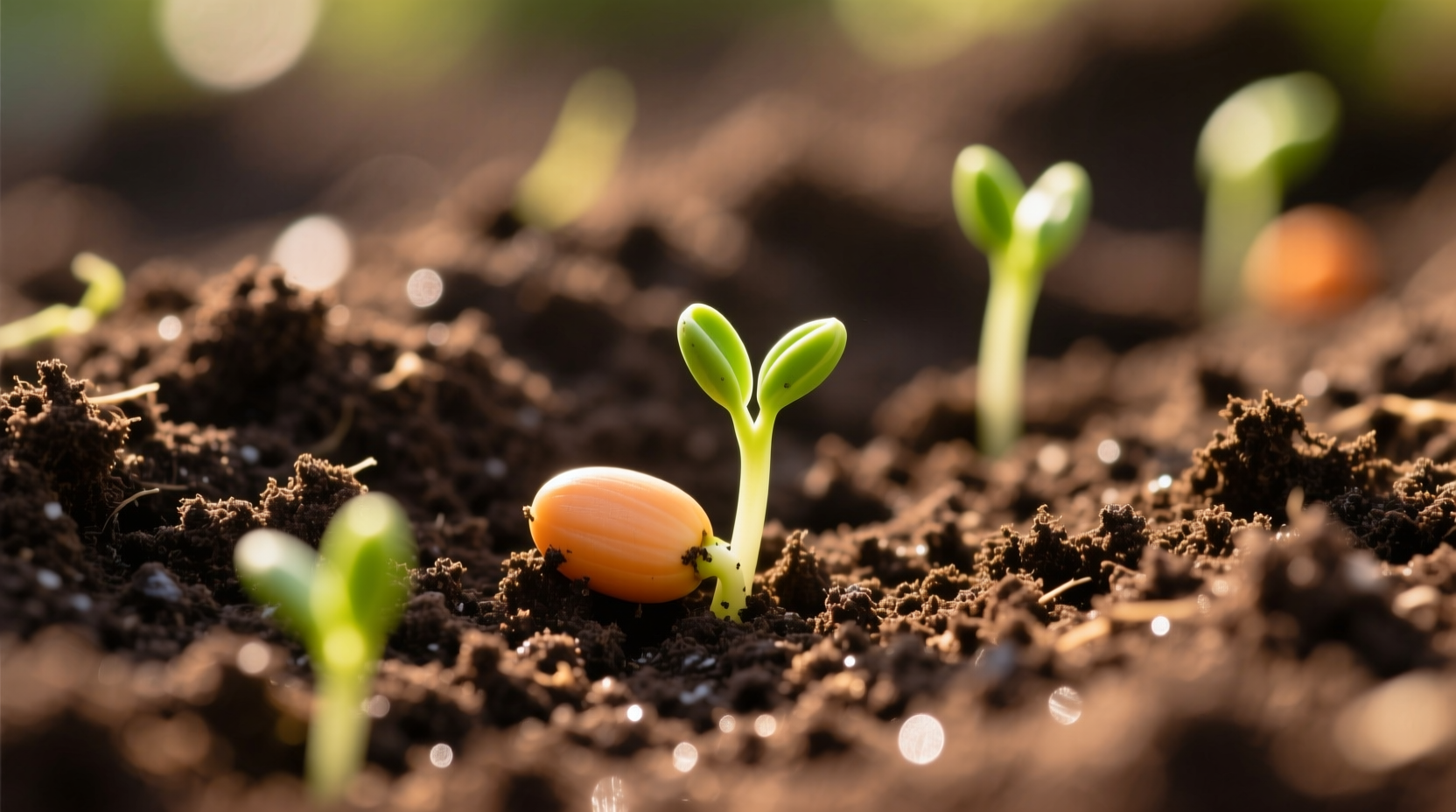Discover exactly how to plant carrot seeds successfully with this comprehensive guide. Whether you're a first-time gardener or looking to improve your harvest, you'll learn proven techniques for perfect germination, proper spacing, and avoiding common mistakes that lead to stunted or misshapen roots. Follow these science-backed methods to grow straight, sweet carrots in your garden this season.
Why Carrot Planting Requires Special Attention
Carrots present unique challenges compared to other vegetables. Their taproot system demands specific soil conditions and careful handling during germination. Unlike many seeds, carrot seeds are tiny and require consistent moisture to sprout properly. Understanding these requirements separates successful carrot growers from those who end up with sparse, forked, or deformed roots.
Preparing Your Soil for Success
Carrots thrive in loose, stone-free soil that allows their roots to grow straight downward. Heavy clay or rocky soil causes misshapen roots. Follow these soil preparation steps:
- Choose a location with full sun (6-8 hours daily)
- Remove all rocks, stones, and large debris from planting area
- Loosen soil to 12-inch depth using a garden fork
- Mix in 2-3 inches of aged compost for nutrients
- Avoid fresh manure which causes forked roots
- Test soil pH (ideal range: 6.0-6.8)
According to the USDA Natural Resources Conservation Service, soil structure directly impacts root vegetable development. Carrots require minimal compaction to grow properly shaped roots.

Planting Carrot Seeds Step-by-Step
Follow this precise planting process for maximum germination rates:
- Timing: Plant 2-3 weeks before last spring frost date when soil reaches 50°F (10°C)
- Seed depth: Sow seeds 1/4 inch deep (no deeper)
- Spacing: Place seeds 1-2 inches apart in rows 12-18 inches apart
- Covering: Lightly cover with fine soil or vermiculite
- Watering: Mist gently to avoid displacing seeds
- Moisture: Keep soil consistently moist until germination
| Carrot Variety | Maturity Days | Best Planting Time | Soil Depth Requirement |
|---|---|---|---|
| Danvers Half-Long | 70-80 | Early spring | 8-10 inches |
| Nantes | 60-70 | Spring or fall | 6-8 inches |
| Chantenay | 70 | Late spring | 6 inches |
| Imperator | 75-80 | Early spring | 10-12 inches |
Germination Timeline and Care Requirements
Carrot seeds have notoriously slow germination. Understanding this timeline prevents common mistakes:
- Days 1-3: Keep soil surface consistently moist (not soggy)
- Days 4-7: Maintain even moisture; consider covering with burlap to retain moisture
- Days 8-14: First seedlings emerge; continue consistent watering
- Weeks 3-4: Thin seedlings to 2-3 inches apart when 2 inches tall
- Weeks 5-10: Water deeply 1-2 inches weekly; avoid uneven watering
- Weeks 10-16: Monitor for maturity based on variety
The Cornell University Cooperative Extension confirms that inconsistent moisture during early growth causes splitting and forking in carrot roots. Maintaining even soil moisture is critical for proper development.
Avoiding Common Planting Mistakes
Even experienced gardeners make these critical errors when planting carrot seeds:
- Planting too deep: Seeds need light for germination; deeper than 1/4 inch reduces success
- Overcrowding: Failure to thin leads to stunted roots and poor development
- Inconsistent watering: Causes splitting and forking of developing roots
- Planting in compacted soil: Results in misshapen, forked carrots
- Using fresh manure: Causes excessive foliage and forked roots
Special Considerations for Different Growing Conditions
Adjust your planting approach based on your specific garden conditions:
- Container gardening: Use pots at least 12 inches deep with drainage holes; choose shorter varieties like Paris Market
- Cold climates: Start seeds indoors 4-6 weeks before last frost; use season extenders
- Warm climates: Plant in fall for winter harvest; provide afternoon shade
- Poor soil: Consider raised beds filled with loose, sandy loam mix
The National Gardening Association reports that gardeners in USDA zones 8-10 achieve best results with fall planting, while northern gardeners succeed with spring planting followed by a second sowing in mid-summer for fall harvest.
When and How to Harvest Your Carrots
Harvest timing depends on your variety and desired size:
- Check maturity dates for your specific variety
- Gently brush soil from top of carrot to check size
- Harvest when shoulders reach 1/2-1 inch diameter
- Loosen soil around carrots before pulling
- Harvest before soil freezes in fall for best quality
For storage, twist off greens immediately after harvest and store roots in cool, humid conditions. Properly stored carrots maintain quality for several months.











 浙公网安备
33010002000092号
浙公网安备
33010002000092号 浙B2-20120091-4
浙B2-20120091-4